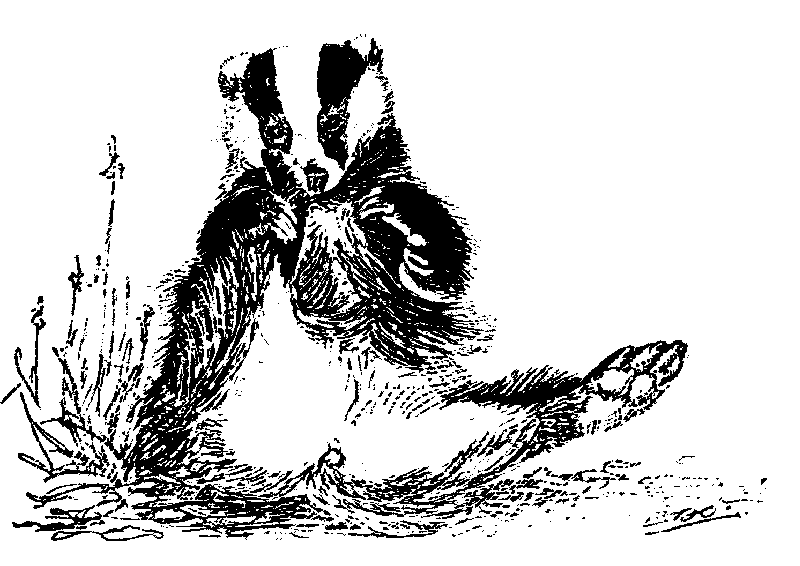|
|
While Spring is the ideal time for
badgerwatching, it can become a year round pursuit for those who become
addicted. Every season will bring its share of anxieties and joys. One
of the most common requests that we get is from people inquiring to know
if there is a sett in their area that they could watch. The honest reply
is that we do not help and if we were aware of specific locations, we
certainly would not reveal them over the phone to someone whose motives
were unclear. In short, we would not risk it. |
 |
| |
Sketch © Copyright of Eunice Overend
|
It has to be explained that some of the fun is finding your
sett(s) and remember you need landowner's permission and indeed they may be able
to point you in the right direction. After that has been accomplished, it's very
important that you never do anything to disturb the badgers. Their lot is an
unhappy one at the best of times without ourselves making more problems for
them. Badger-watching, as every watcher will verify can be a tedious occupation
at time. You may have to be standing or sitting for hours (in the dark) without
moving or making a sound. Summer or Winter, nights will be cold, especially
since you won't be moving about, so allow for this. Clothing should be dark,
warm and comfortable and definitely not the rustling kind. Do not carry anything
that might make a noise, if you are forced to move.
It is better to plan beforehand where you will stand and watch from. Take into
account the wind direction. Then you will know exactly where you are going on
the night and take up position with the minimum of noise and fuss. Some setts
are more difficult to watch than others. "Our" sett, which usually has four
entrances, is the difficiult type because it is located on a slope with an
abundance of undergrowth until late Autumn. Good for the badgers but not for us
watchers. We feel this is actually a subsidiary sett with the obvious main sett
situated nearby but on the other side of an extremely busy road. We have tried
you watch this main sett but the geography simply makes it impossible.
Spring is undoubtedly the prime time for watching, cubs being the main focus of
attention. During the bright evenings we tend to take our position before dusk.
Watch from the direction where the wind is blowing away from the sett into your
face. Use trees or bushes if possible to camouflage your presence. While badgers
are reputed to be poor-sighted, they will quickly recognise an unfamiliar
outline on their own landscape. Be prepared to wait!! Also, you'll find that in
next to no time, there's plenty of company, as the insect population of the
locality start to descend upon you from all directions. That's when the art of
standing/sitting still for long periods really comes into it's own.
We use a red filter on torches after dark. It doesn't seem to cause the badgers
any problems. We tend to hear the badgers foraging about, before we actually see
them. One way or another, it's always a special feeling seeing them when they
first emerge be their appearance brief or otherwise. At the end of your watch,
leave the area as quietly as possible. And remember, it pays to be careful when
you're discussing your new hobby, a wrong word in the wrong place might bear
tragic consequences for badgers.
Copyright 2008 by Badgerwatch Ireland. All rights reserved. |
